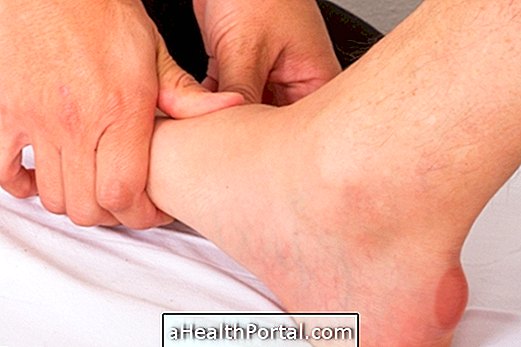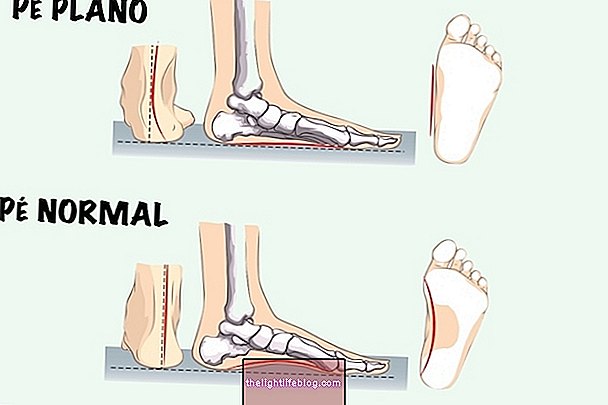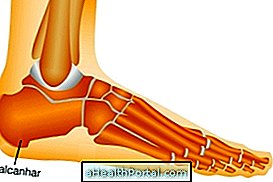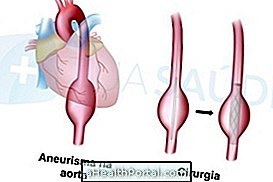Surgery for the treatment of disc herniation, both lumbar and cervical, is indicated in cases where there has been no improvement in the symptoms of pain and discomfort, even with remedy and physiotherapy treatment, or when there are signs of loss of strength or sensitivity. This is because this procedure offers some risks, such as limiting the movement of the spine or infection, for example.
The type of surgery can vary, with the traditional opening of the skin to reach the spine, or the use of more recent and less invasive techniques, with the aid of a microscope, for example. The recovery can vary from a few weeks to 1 month, depending on the technique used, and the performance of rehabilitation physiotherapy helps in the improvement of symptoms and resumption of spinal movements.

Types of Surgery
The type of surgery can vary according to the location of the hernia, with the technique available in the hospital or according to the needs of each patient, being determined by the orthopedist or neurosurgeon. The main types are:
1. Traditional surgery
It is made with the opening of the skin, with a cut, to reach the spine. The choice of the site of access to the spine is made according to the nearest place to reach the disc, which may be in the front, as is common in the cervical hernia, lateral or back, as is common in lumbar hernia.
This surgery is usually done with general anesthesia, and the intervertebral disc that is impaired may be removed, partially or completely. Thereafter, a material may be used to join the 2 vertebrae or an artificial material may be used to replace the removed disc. The surgery time varies according to the location and situation of the hernia of each person, but lasts about 2 hours.
2. Minimally invasive surgery
Minimally invasive surgery uses new techniques that allow a smaller opening of the skin, which provides less movement of the structures around the spine, a faster surgery time and a lower risk of complications such as bleeding and infection.
The main techniques used are:
- Microsurgery : the manipulation of the intervertebral disc is done with the help of a surgical microscope, requiring a smaller opening of the skin. In addition, small nerves may be cauterized around the hernia to decrease pain;
- Endoscopic Surgery : A technique is done by inserting small tubes into the skin, one with a camera, also allowing a procedure without the need to open the skin too much and manipulate many spine structures.
Minimally invasive surgery can be done with local anesthesia and sedation lasting for about 1 hour or less. During surgery, a radiofrequency or laser device may be used to remove the herniated part of the disc and, for this reason, this type of surgery is also known as laser surgery.
Price of herniated disc surgery
Surgery for the herniated disc can be performed by SUS, in selected cases and needing to wait in line. However, for surgery in a particular way, the price can vary from R $ 4, 000.00 to R $ 10, 000, 000, depending on the type of surgery performed and the hospital where it will be performed.
Surgery Risks
Herniated disc surgery may present some complications, but the risk is quite small, mainly due to the increasingly modern techniques and devices that have been used. The main complications that may arise are:
- Persistence of pain in the spine;
- Infection;
- Bleeding;
- Injury of nerves around the spine;
- Difficulty in moving the spine.
Because of these risks, surgery is reserved for those with unbearable symptoms, or when there has been no improvement with other forms of treatment for herniated disc. Learn about the possibility of treatment and physiotherapy for lumbar disc herniation and cervical disc herniation.
How is recovery
The postoperative period varies according to the surgery, and the hospitalization time is 2 days in the minimally invasive surgery and can reach 5 days in the conventional surgery.
The possibility of doing activities such as driving or returning to work is also faster in minimally invasive surgery in about 10 days. In traditional surgery, to return to work, a rest period of at least 2 weeks is required. Even more intense activities, such as physical exercises, are only released after 1 month of the procedure.
During the recovery period, analgesic or anti-inflammatory drugs prescribed by the physician should be used to relieve pain. Rehabilitation physiotherapy should also be started, with techniques to assist in the recovery of movements and maintain good posture. See what care should be taken after a spine surgery to speed up the postoperative recovery.
Watch the following video and learn other tips that can help with recovery:























